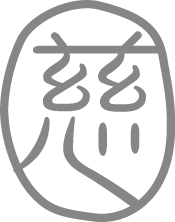1.28~29《農十二月‧二十九至農正月初一》

【靜思小語】祥和的環境來自於人心的平和,要彼此祝福、相互體恤。
日日新,日日心歡喜
元月二十八日,甲辰年除夕,許多海內外慈濟人攜家帶眷返回精舍團圓,十分熱鬧溫馨。圍爐前,上人在會客室連線觀看精舍各用餐區,為大眾開示祝福後,由常住師父承接圍爐紅包發至各定點。
上人祝福大家:「除夕夜,人人見面說好話,其實不是一年一度才相互祝福,我們要日日彼此祝福、彼此勉勵,是因為我們肯定自己的生命,也肯定別人,尤其難得有這群同心、同願的法親,要相互珍惜。在這樣的氣氛中,大家自然會精進。」
「時常提起一個實驗,準備二碗飯,對一碗飯天天說好話祝福它,這碗飯經過了幾天都還有清香;對另一碗飯,天天咒罵它,它很快就發霉腐壞了。人與人之間亦同此理,人人本性清淨,都有善心善念,只是環境不同,養成不同的習氣。假如是在彼此互爭互鬥的環境,很難找出心平氣和的人;在彼此祝福、相互勉勵的環境,人心一定是平和的。慈濟人在這五十多年走過來,人人互愛關懷,彼此體恤,所以人與人之間,見面就有歡喜心,相互感恩與祝福,這個環境就很自然會祥和。」
「明天就是過年,過去這一年,天下災難很多,除了大自然的地水火風不調,還加上了人心不調,互爭互鬥的人禍,世間紛紛擾擾,讓人很擔心。災難是擋不住,但是我很希望人人要心存好念,彼此共善而且共行,造福人間,用福氣消弭災難。」
上人說,臺灣在過去這一年來大致平安,雖然遭遇幾次颱風,包括精舍園區的樹木被康芮颱風的強大陣風吹倒受災,不過很快就有各地慈濟人回來,把被吹倒的樹扶起來並且支撐好,或重新種植,看了以後覺得比颱風前更鞏固。
「我從臺北回來的時候,車子從外面遠遠地開進來,我一直看著精舍,覺得很安心,整體安然無恙,園區綠意盎然,還是一個莊嚴道場;雖然人力無法勝天,可是災難過後可以靠人力快速來彌補。」
受冷氣團影響,臺灣今日普遍低溫。上人說起幾十年前,自己年幼、年輕時,冬天很冷,會讓老人家拿竹編的小火爐,裏面小火盆放著燒紅的炭,用以取暖。現在已經看不到有人用火爐,也因為科技發達,住家使用暖氣,這是現代人的福。希望人人在享福的同時,還要持續造福人間。
「歡迎弟子們回到法脈的大家庭,大家歡歡喜喜圍爐。祝福人人新年事事如意,師父還要大家日日心歡喜,就如過年時,日日新,每天的心都清淨無染,天天快樂;要日日早起聞法,吸收佛法以增長慧命,生命是隨日過,但是慧命要日日增,日日行善造福,福慧雙修!」
大家庭,新春聚一堂
元月二十九日,乙巳年正月初一,全球慈濟人以清淨歡喜之心,於精舍現場或透過網路視訊,同步跟隨常住師父們做早課,並聆聽上人於早課後的開示。「時日匆匆,昨天已是『去年』,今日則是『新年』。昨晚圍爐,我們這個大家庭很大、很旺,慈濟人從海內外遠途歸來,二千多人共聚一堂。雖然我無法到齋堂,不過也從視訊畫面看到了,如同參與大家的圍爐一樣,很歡喜!」
「這是一個大愛的大家庭,期待這個大家庭的成員年年增長,全球各地都有慈濟人為人間做事,讓大愛普及天下。很難得每年此時,大家利用春節假期回來,常住要疼惜、照顧慈濟菩薩,用法與大家分享,讚歎慈濟人做慈濟事。修行是向內自修身心,向外要走入人間行菩薩道,現在內外會合,要用心發揮法親之愛,把握因緣多招呼。」
「一年之計在於春,大地遇春豐足,萬物復甦,是生機旺盛之時,我們也要把握此時發心立願為人間付出,日日虔誠為天下祈求平安。這是我們應該有的誠意,與應該要負起的責任。除了自己造福,還要引導其他人,共同用心用愛造福人間,才能有足以庇護人間的福氣,讓四季氣候調和,天下無災難。」上人說,天地大自然是大乾坤,人體則是小乾坤,大小乾坤都要四大調和,才能平安順遂;要維持身體健康,更要調和心靈,時時發好願,用心勤精進,請大家多用心!
盡責任,照顧好自己
各地慈濟人紛紛回來拜年,大林慈濟醫院賴俊良副院長並報告醫院通過評鑑,正式成為準醫學中心。上人開示:「主管同仁們要有信心,不是準醫學中心而已,要用醫學中心的標準要求自己,盡我們的誠意,顧好品質,繼續發揮守護生命、守護健康、守護愛的使命。」上人也感恩大林慈院照顧南部慈濟人:「法親菩薩們的年紀大了,有你們就近關心,代替師父關懷,很感恩!」
南非、史瓦帝尼、賴索托、辛巴威、莫三比克等非洲國家的慈濟人經由視訊連線,向上人拜年。辛巴威朱金財師兄用閩南語獻唱〈慈濟之路〉,是以閩南語歌謠〈農村曲〉的韻調,由同修李照琴改寫歌詞為─透早就出門,天色漸漸光,為著要做善事,我入慈濟宗門。上人希望阮做人要仁慈,要守本分,當一個慈悲的慈濟人。
上人說,這是臺灣很早期的老歌,務農的人大清早就出門,是為了生活;而辛巴威慈濟人大清早出門,是為了做善事。師兄師姊將這首歌帶到辛巴威,用來帶動居民做慈濟事,勉勵居民做好人,很適當、很有智慧!感恩這對菩薩伴侶,牽手在這個苦難國家付出,帶著志工為居民鑿井、維修水井。水是人的大生命,無水不能生存,不過鑿井之後有淨水可用,大家要感恩、要珍惜,水資源不能浪費,請師兄師姊要好好教導居民惜水、愛護水源。
莫三比克慈濟志工獻唱〈立願文〉,上人肯定大家咬字清楚,讓自己聽得懂;歌詞中「吾等弟子當謹記」,要記得師父說的話,聽入心化成行動,每位都是貼心弟子,而且是很飽滿的慈濟種子。期待每次視訊連線,可以看到更多茹素、聞法的精進志工。
中區慈濟人醫會紀邦杰醫師等人返回精舍拜年,並請上人保重法體。上人與眾共勉:「我覺得責任還很重,所以會好好照顧自己;你們也一樣,慈濟人都是責任重大,所以要照顧好自己,才有辦法照顧別人,要知道有很多人都需要我們照顧,師父現在就是靠這分心念支持自己。你們就要學師父,聽從醫師的建議做保健,即使你們本身是醫師,不過不同科有不同的專業,要照醫師說的去做。」
《證嚴上人衲履足跡》,是「上人之日記」。
靜思精舍常住每日敬侍師側、記錄言行,經融會貫通於心,轉化為字字珠璣,彙整結集,每年四冊,依春、夏、秋、冬四季出版。
本專欄即精簡摘錄自《證嚴上人衲履足跡》,完整版本請關注每季最新出版品。

1.28~29《農十二月‧二十九至農正月初一》

【靜思小語】祥和的環境來自於人心的平和,要彼此祝福、相互體恤。
日日新,日日心歡喜
元月二十八日,甲辰年除夕,許多海內外慈濟人攜家帶眷返回精舍團圓,十分熱鬧溫馨。圍爐前,上人在會客室連線觀看精舍各用餐區,為大眾開示祝福後,由常住師父承接圍爐紅包發至各定點。
上人祝福大家:「除夕夜,人人見面說好話,其實不是一年一度才相互祝福,我們要日日彼此祝福、彼此勉勵,是因為我們肯定自己的生命,也肯定別人,尤其難得有這群同心、同願的法親,要相互珍惜。在這樣的氣氛中,大家自然會精進。」
「時常提起一個實驗,準備二碗飯,對一碗飯天天說好話祝福它,這碗飯經過了幾天都還有清香;對另一碗飯,天天咒罵它,它很快就發霉腐壞了。人與人之間亦同此理,人人本性清淨,都有善心善念,只是環境不同,養成不同的習氣。假如是在彼此互爭互鬥的環境,很難找出心平氣和的人;在彼此祝福、相互勉勵的環境,人心一定是平和的。慈濟人在這五十多年走過來,人人互愛關懷,彼此體恤,所以人與人之間,見面就有歡喜心,相互感恩與祝福,這個環境就很自然會祥和。」
「明天就是過年,過去這一年,天下災難很多,除了大自然的地水火風不調,還加上了人心不調,互爭互鬥的人禍,世間紛紛擾擾,讓人很擔心。災難是擋不住,但是我很希望人人要心存好念,彼此共善而且共行,造福人間,用福氣消弭災難。」
上人說,臺灣在過去這一年來大致平安,雖然遭遇幾次颱風,包括精舍園區的樹木被康芮颱風的強大陣風吹倒受災,不過很快就有各地慈濟人回來,把被吹倒的樹扶起來並且支撐好,或重新種植,看了以後覺得比颱風前更鞏固。
「我從臺北回來的時候,車子從外面遠遠地開進來,我一直看著精舍,覺得很安心,整體安然無恙,園區綠意盎然,還是一個莊嚴道場;雖然人力無法勝天,可是災難過後可以靠人力快速來彌補。」
受冷氣團影響,臺灣今日普遍低溫。上人說起幾十年前,自己年幼、年輕時,冬天很冷,會讓老人家拿竹編的小火爐,裏面小火盆放著燒紅的炭,用以取暖。現在已經看不到有人用火爐,也因為科技發達,住家使用暖氣,這是現代人的福。希望人人在享福的同時,還要持續造福人間。
「歡迎弟子們回到法脈的大家庭,大家歡歡喜喜圍爐。祝福人人新年事事如意,師父還要大家日日心歡喜,就如過年時,日日新,每天的心都清淨無染,天天快樂;要日日早起聞法,吸收佛法以增長慧命,生命是隨日過,但是慧命要日日增,日日行善造福,福慧雙修!」
大家庭,新春聚一堂
元月二十九日,乙巳年正月初一,全球慈濟人以清淨歡喜之心,於精舍現場或透過網路視訊,同步跟隨常住師父們做早課,並聆聽上人於早課後的開示。「時日匆匆,昨天已是『去年』,今日則是『新年』。昨晚圍爐,我們這個大家庭很大、很旺,慈濟人從海內外遠途歸來,二千多人共聚一堂。雖然我無法到齋堂,不過也從視訊畫面看到了,如同參與大家的圍爐一樣,很歡喜!」
「這是一個大愛的大家庭,期待這個大家庭的成員年年增長,全球各地都有慈濟人為人間做事,讓大愛普及天下。很難得每年此時,大家利用春節假期回來,常住要疼惜、照顧慈濟菩薩,用法與大家分享,讚歎慈濟人做慈濟事。修行是向內自修身心,向外要走入人間行菩薩道,現在內外會合,要用心發揮法親之愛,把握因緣多招呼。」
「一年之計在於春,大地遇春豐足,萬物復甦,是生機旺盛之時,我們也要把握此時發心立願為人間付出,日日虔誠為天下祈求平安。這是我們應該有的誠意,與應該要負起的責任。除了自己造福,還要引導其他人,共同用心用愛造福人間,才能有足以庇護人間的福氣,讓四季氣候調和,天下無災難。」上人說,天地大自然是大乾坤,人體則是小乾坤,大小乾坤都要四大調和,才能平安順遂;要維持身體健康,更要調和心靈,時時發好願,用心勤精進,請大家多用心!
盡責任,照顧好自己
各地慈濟人紛紛回來拜年,大林慈濟醫院賴俊良副院長並報告醫院通過評鑑,正式成為準醫學中心。上人開示:「主管同仁們要有信心,不是準醫學中心而已,要用醫學中心的標準要求自己,盡我們的誠意,顧好品質,繼續發揮守護生命、守護健康、守護愛的使命。」上人也感恩大林慈院照顧南部慈濟人:「法親菩薩們的年紀大了,有你們就近關心,代替師父關懷,很感恩!」
南非、史瓦帝尼、賴索托、辛巴威、莫三比克等非洲國家的慈濟人經由視訊連線,向上人拜年。辛巴威朱金財師兄用閩南語獻唱〈慈濟之路〉,是以閩南語歌謠〈農村曲〉的韻調,由同修李照琴改寫歌詞為─透早就出門,天色漸漸光,為著要做善事,我入慈濟宗門。上人希望阮做人要仁慈,要守本分,當一個慈悲的慈濟人。
上人說,這是臺灣很早期的老歌,務農的人大清早就出門,是為了生活;而辛巴威慈濟人大清早出門,是為了做善事。師兄師姊將這首歌帶到辛巴威,用來帶動居民做慈濟事,勉勵居民做好人,很適當、很有智慧!感恩這對菩薩伴侶,牽手在這個苦難國家付出,帶著志工為居民鑿井、維修水井。水是人的大生命,無水不能生存,不過鑿井之後有淨水可用,大家要感恩、要珍惜,水資源不能浪費,請師兄師姊要好好教導居民惜水、愛護水源。
莫三比克慈濟志工獻唱〈立願文〉,上人肯定大家咬字清楚,讓自己聽得懂;歌詞中「吾等弟子當謹記」,要記得師父說的話,聽入心化成行動,每位都是貼心弟子,而且是很飽滿的慈濟種子。期待每次視訊連線,可以看到更多茹素、聞法的精進志工。
中區慈濟人醫會紀邦杰醫師等人返回精舍拜年,並請上人保重法體。上人與眾共勉:「我覺得責任還很重,所以會好好照顧自己;你們也一樣,慈濟人都是責任重大,所以要照顧好自己,才有辦法照顧別人,要知道有很多人都需要我們照顧,師父現在就是靠這分心念支持自己。你們就要學師父,聽從醫師的建議做保健,即使你們本身是醫師,不過不同科有不同的專業,要照醫師說的去做。」
《證嚴上人衲履足跡》,是「上人之日記」。
靜思精舍常住每日敬侍師側、記錄言行,經融會貫通於心,轉化為字字珠璣,彙整結集,每年四冊,依春、夏、秋、冬四季出版。
本專欄即精簡摘錄自《證嚴上人衲履足跡》,完整版本請關注每季最新出版品。









